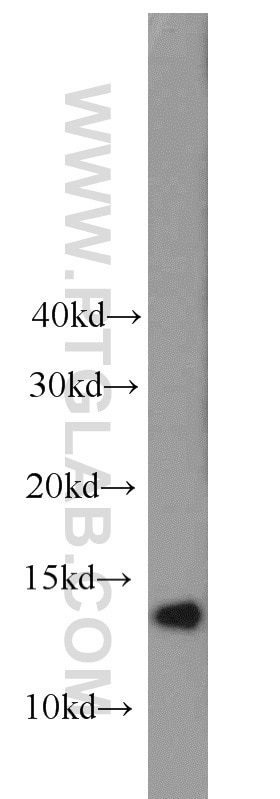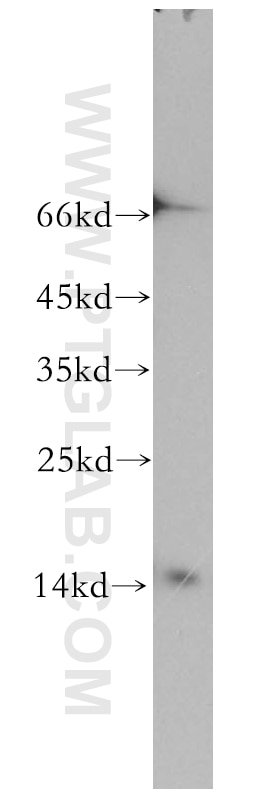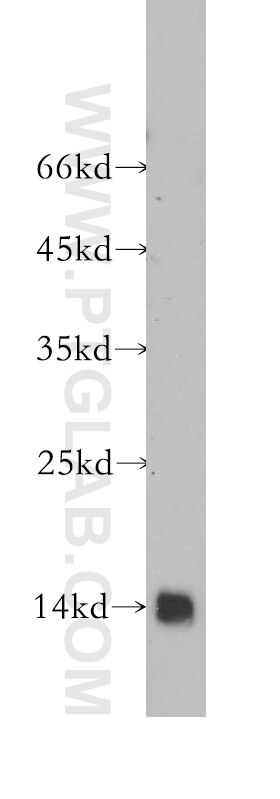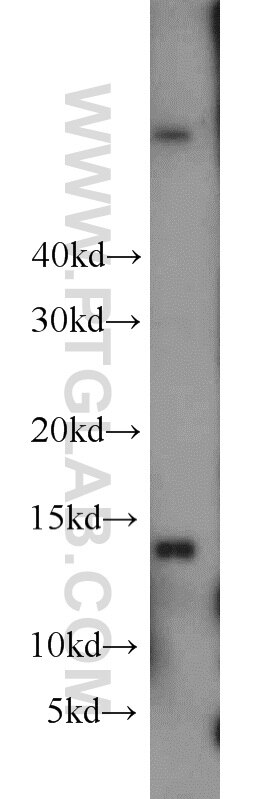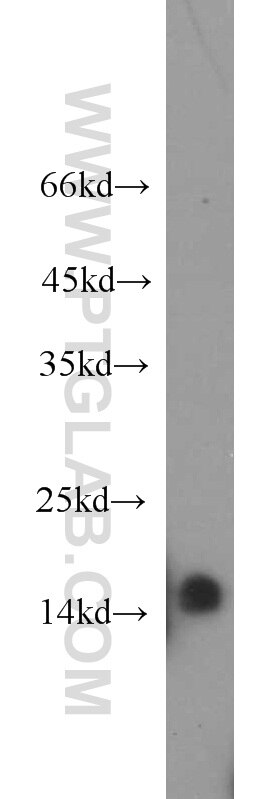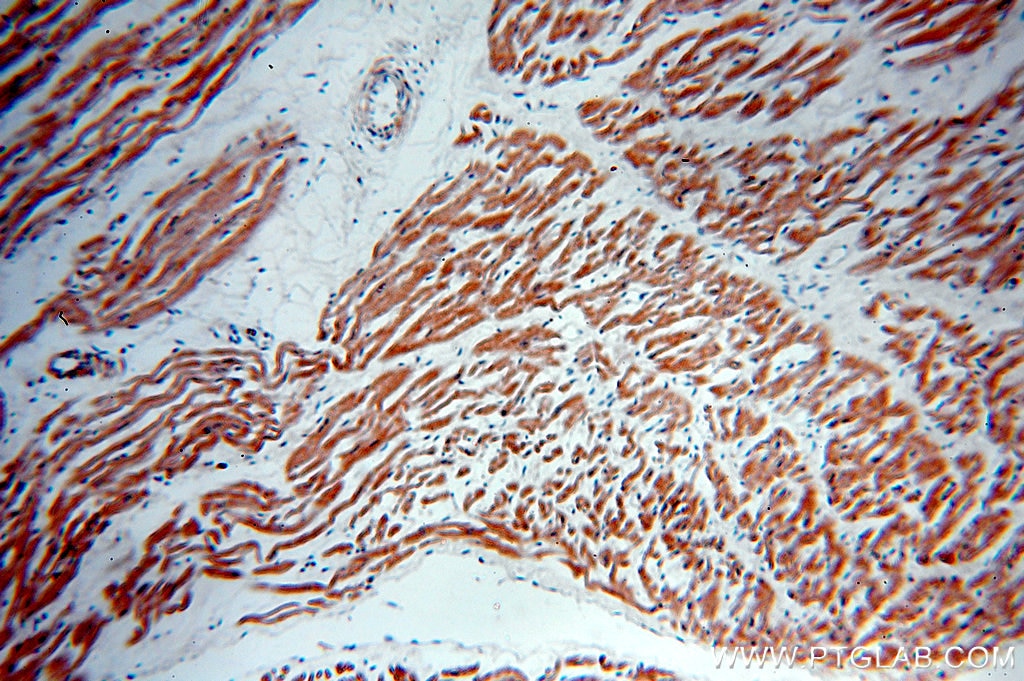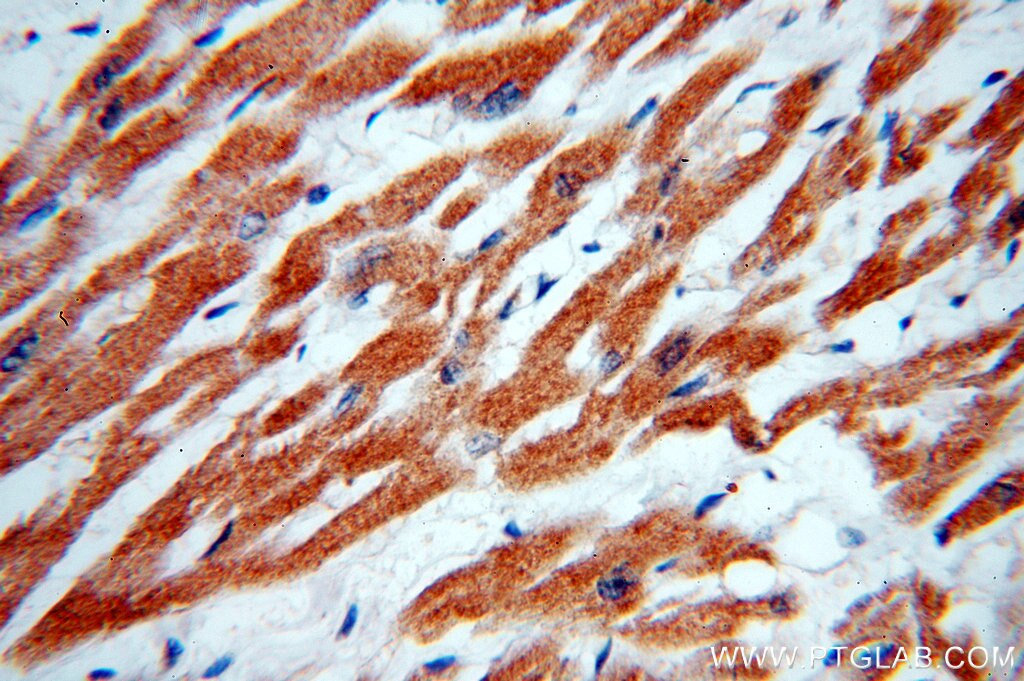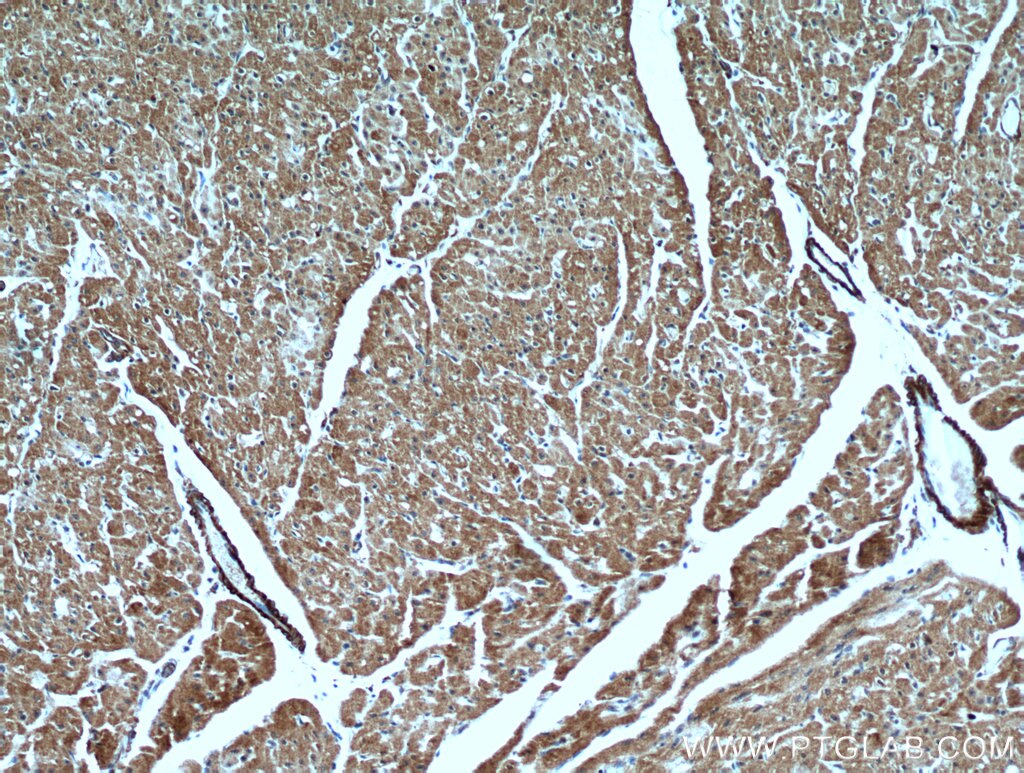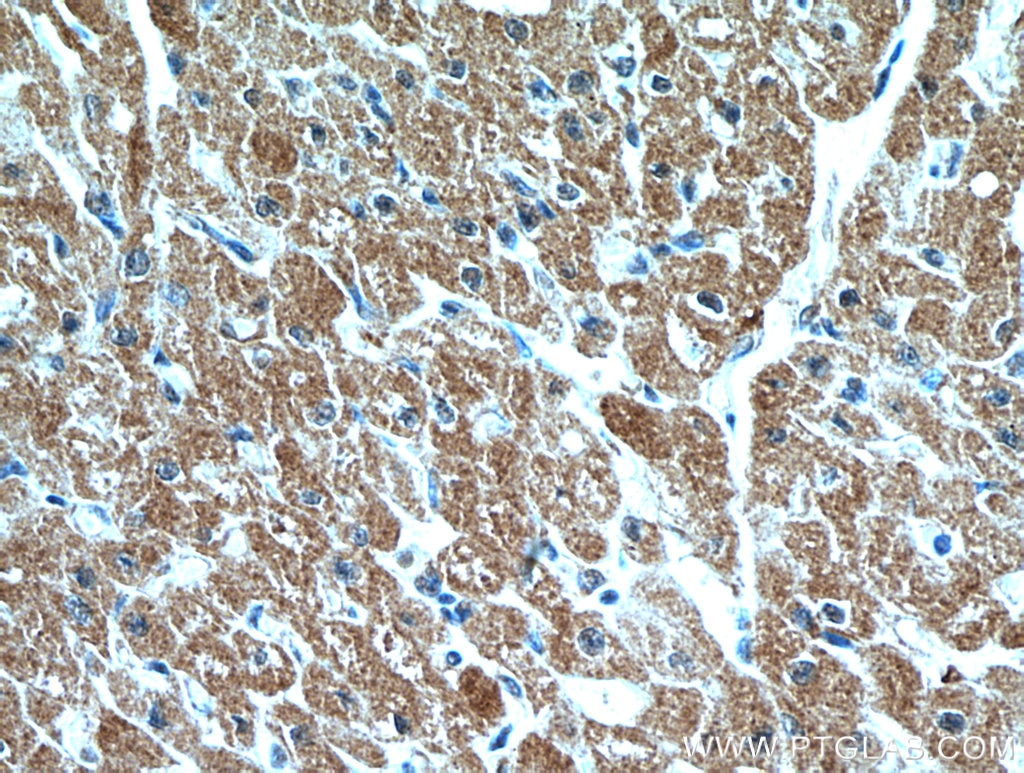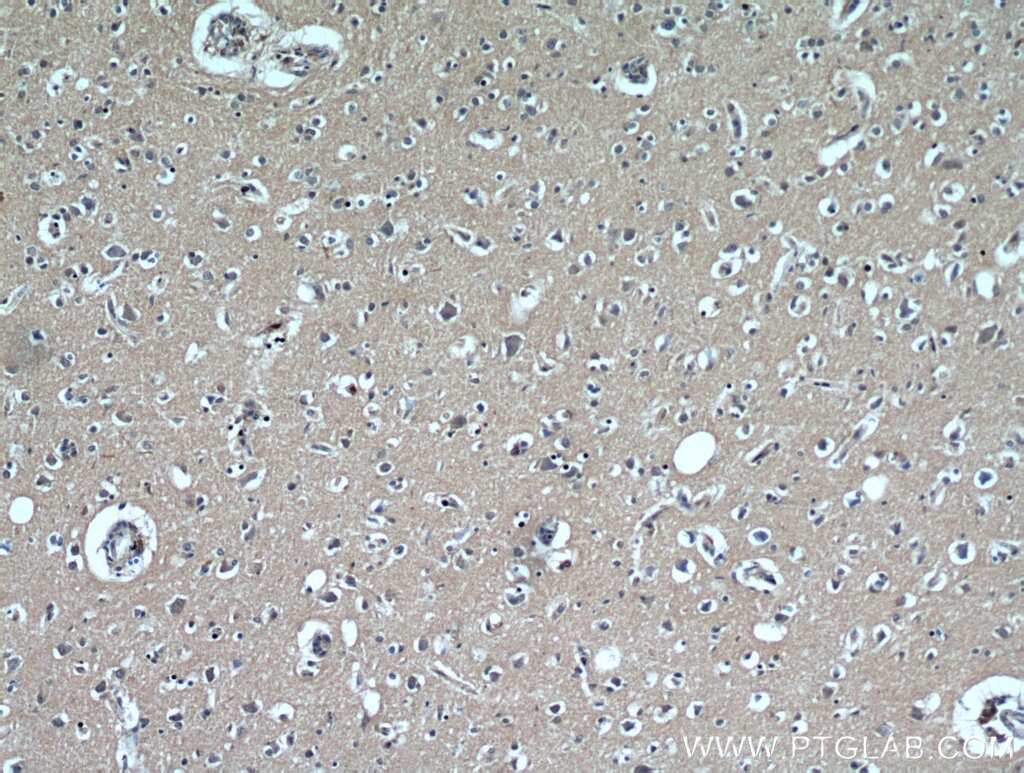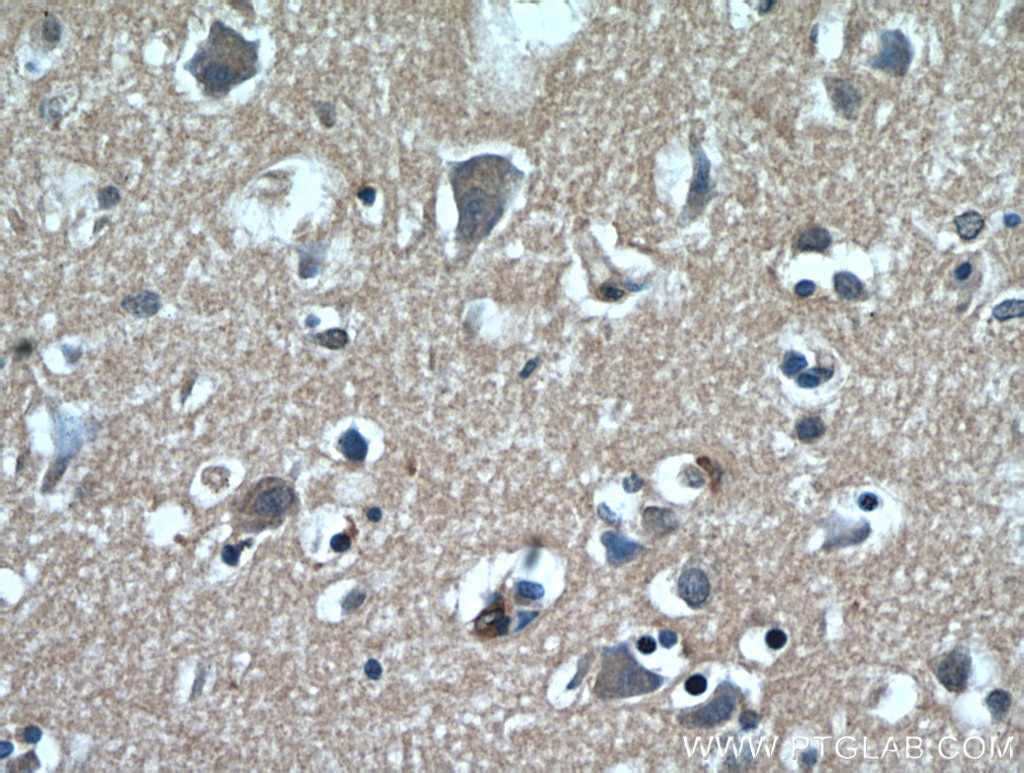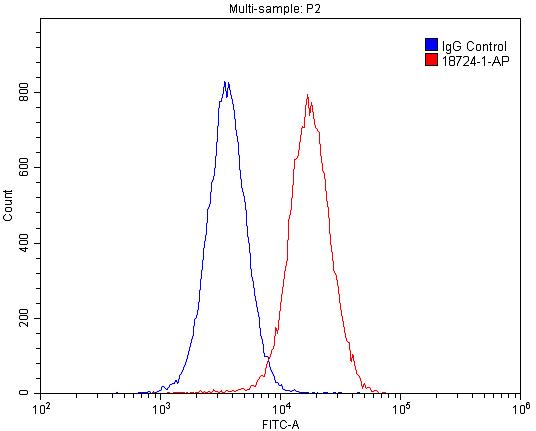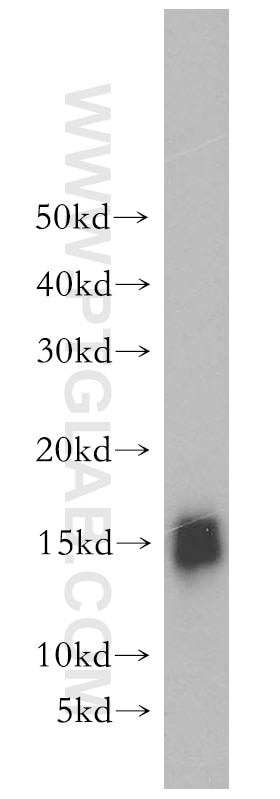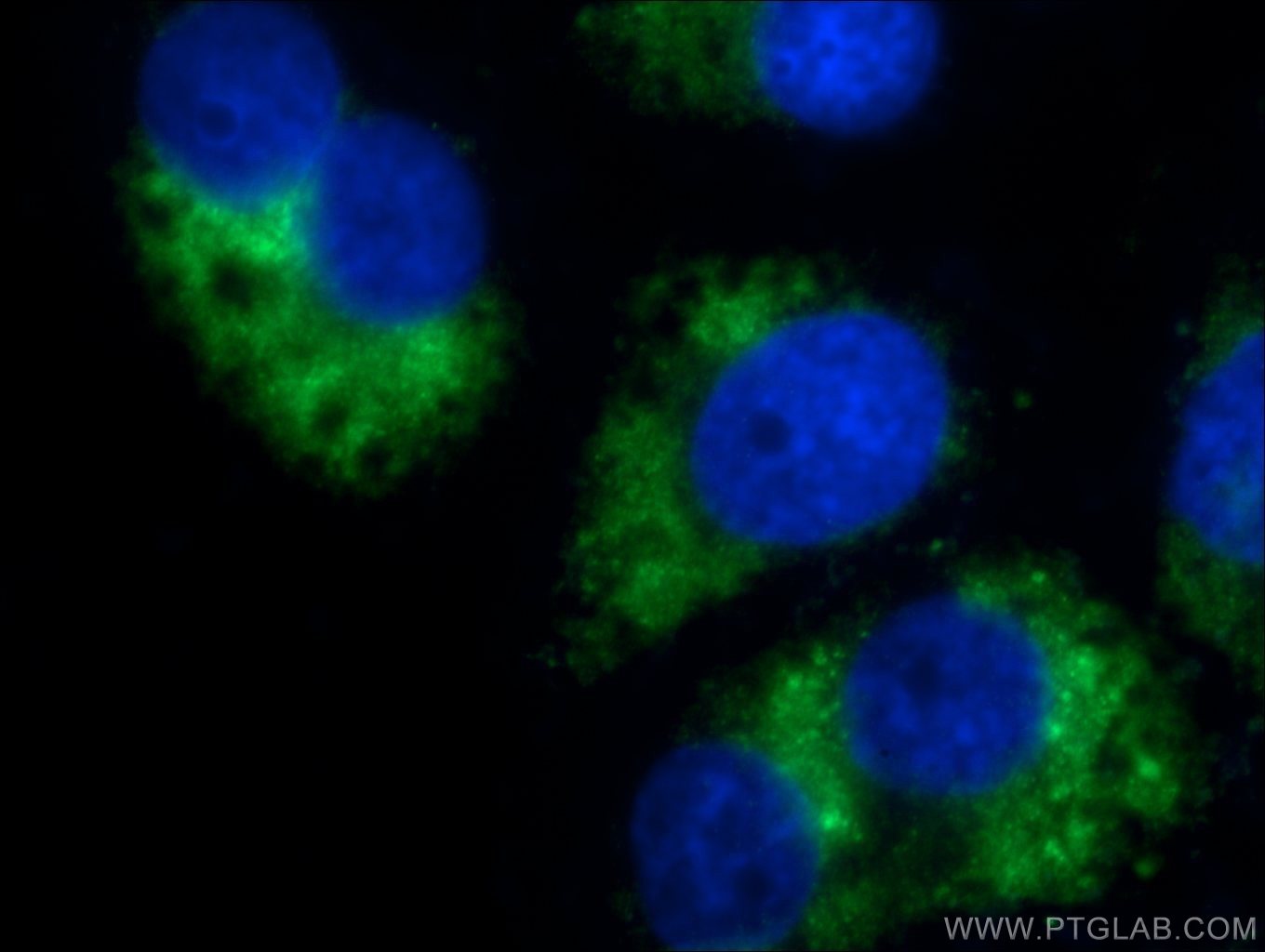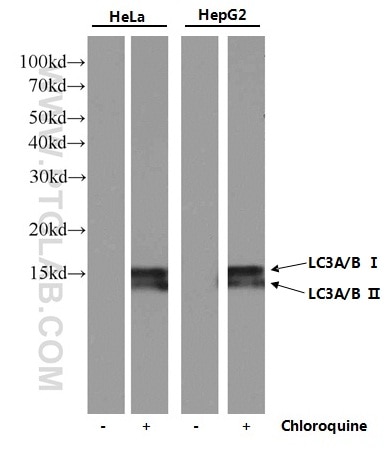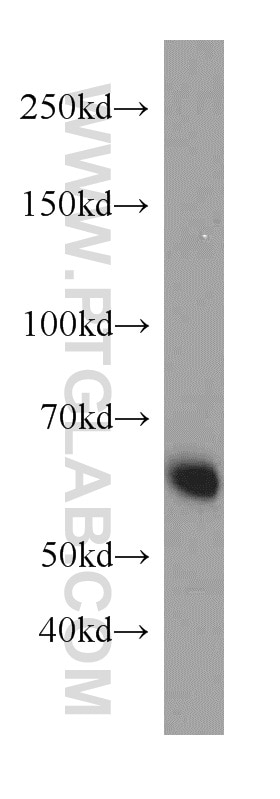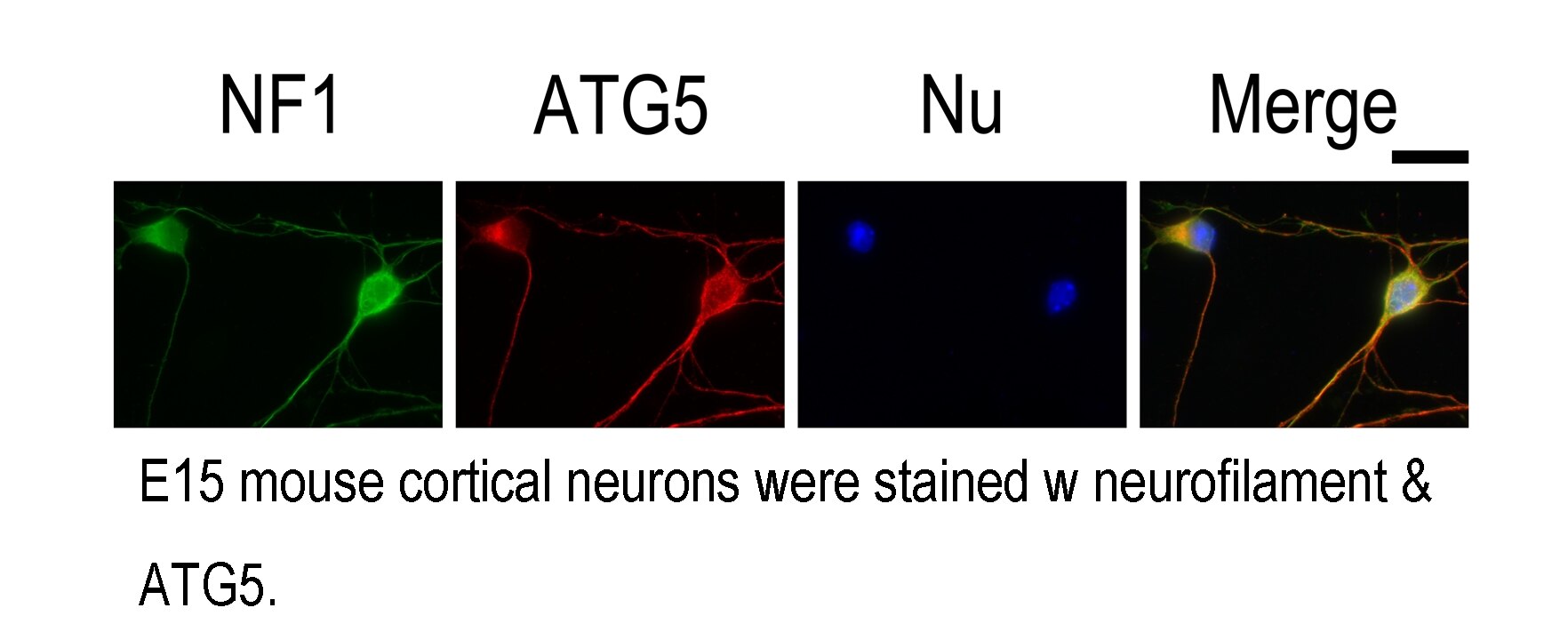- Featured Product
- KD/KO Validated
GABARAPL2-Specific Polyklonaler Antikörper
GABARAPL2-Specific Polyklonal Antikörper für FC, IHC, WB,ELISA
Wirt / Isotyp
Kaninchen / IgG
Getestete Reaktivität
human, Maus, Ratte
Anwendung
WB, IHC, FC, ELISA
Konjugation
Unkonjugiert
Kat-Nr. : 18724-1-AP
Synonyme
Galerie der Validierungsdaten
Geprüfte Anwendungen
| Erfolgreiche Detektion in WB | COLO 320-Zellen, humanes Hirngewebe, Maushirngewebe, Mausmilzgewebe, PC-3-Zellen |
| Erfolgreiche Detektion in IHC | humanes Herzgewebe, humanes Hirngewebe Hinweis: Antigendemaskierung mit TE-Puffer pH 9,0 empfohlen. (*) Wahlweise kann die Antigendemaskierung auch mit Citratpuffer pH 6,0 erfolgen. |
| Erfolgreiche Detektion in FC | HepG2-Zellen |
Empfohlene Verdünnung
| Anwendung | Verdünnung |
|---|---|
| Western Blot (WB) | WB : 1:500-1:1000 |
| Immunhistochemie (IHC) | IHC : 1:20-1:200 |
| Durchflusszytometrie (FC) | FC : 0.20 ug per 10^6 cells in a 100 µl suspension |
| It is recommended that this reagent should be titrated in each testing system to obtain optimal results. | |
| Sample-dependent, check data in validation data gallery | |
Veröffentlichte Anwendungen
| KD/KO | See 2 publications below |
| WB | See 10 publications below |
| IHC | See 2 publications below |
Produktinformation
18724-1-AP bindet in WB, IHC, FC, ELISA GABARAPL2-Specific und zeigt Reaktivität mit human, Maus, Ratten
| Getestete Reaktivität | human, Maus, Ratte |
| In Publikationen genannte Reaktivität | human, Maus, Ratte |
| Wirt / Isotyp | Kaninchen / IgG |
| Klonalität | Polyklonal |
| Typ | Antikörper |
| Immunogen | Peptid |
| Vollständiger Name | GABA(A) receptor-associated protein-like 2 |
| Berechnetes Molekulargewicht | 14 kDa |
| Beobachtetes Molekulargewicht | 14 kDa |
| GenBank-Zugangsnummer | BC005985 |
| Gene symbol | GABARAPL2 |
| Gene ID (NCBI) | 11345 |
| Konjugation | Unkonjugiert |
| Form | Liquid |
| Reinigungsmethode | Antigen-Affinitätsreinigung |
| Lagerungspuffer | PBS mit 0.02% Natriumazid und 50% Glycerin pH 7.3. |
| Lagerungsbedingungen | Bei -20°C lagern. Nach dem Versand ein Jahr lang stabil Aliquotieren ist bei -20oC Lagerung nicht notwendig. 20ul Größen enthalten 0,1% BSA. |
Hintergrundinformationen
GABARAPL2 (also known as Golgi-associated ATPase enhancer of 16 kDa; GATE-16) was originally characterized as a factor essential for intra-Golgi protein transport. Later GABARAPL2 along with LC3 and GABARAP, were identified as the homologs of yeast ATG8 which is a unique ubiquitin-like protein essential for autophagy. When induced GABARAPL2 is first digested by ATG4 family enzymes to become its mature form: GABARAPL2-I, later conjugated to PE lipid as lipidated form: GABARAPL2-II. The lipidated form migrates faster than its mature form on SDS-PAGE gel. GABARAPL2 is strongly expressed in the brain. This antibody is specific to GABARAPL2. It has no cross-reaction to other GABARAP protein.
Protokolle
| Produktspezifische Protokolle | |
|---|---|
| WB protocol for GABARAPL2-Specific antibody 18724-1-AP | Protokoll herunterladen |
| IHC protocol for GABARAPL2-Specific antibody 18724-1-AP | Protokoll herunterladen |
| FC protocol for GABARAPL2-Specific antibody 18724-1-AP | Protokoll herunterladen |
| Standard-Protokolle | |
|---|---|
| Klicken Sie hier, um unsere Standardprotokolle anzuzeigen |
Publikationen
| Species | Application | Title |
|---|---|---|
Nat Immunol Essential role for GABARAP autophagy proteins in interferon-inducible GTPase-mediated host defense.
| ||
Autophagy CASP9 (caspase 9) is essential for autophagosome maturation through regulation of mitochondrial homeostasis. | ||
Autophagy Mass spectrometry proteomics reveals a function for mammalian CALCOCO1 in MTOR-regulated selective autophagy. | ||
Comput Biol Med Identifying mitophagy-related genes as prognostic biomarkers and therapeutic targets of gastric carcinoma by integrated analysis of single-cell and bulk-RNA sequencing data | ||
Cell Death Dis Liver glycogen phosphorylase is upregulated in glioblastoma and provides a metabolic vulnerability to high dose radiation. | ||
Neurobiol Dis Alteration of autophagosomal proteins in the brain of multiple system atrophy. |
